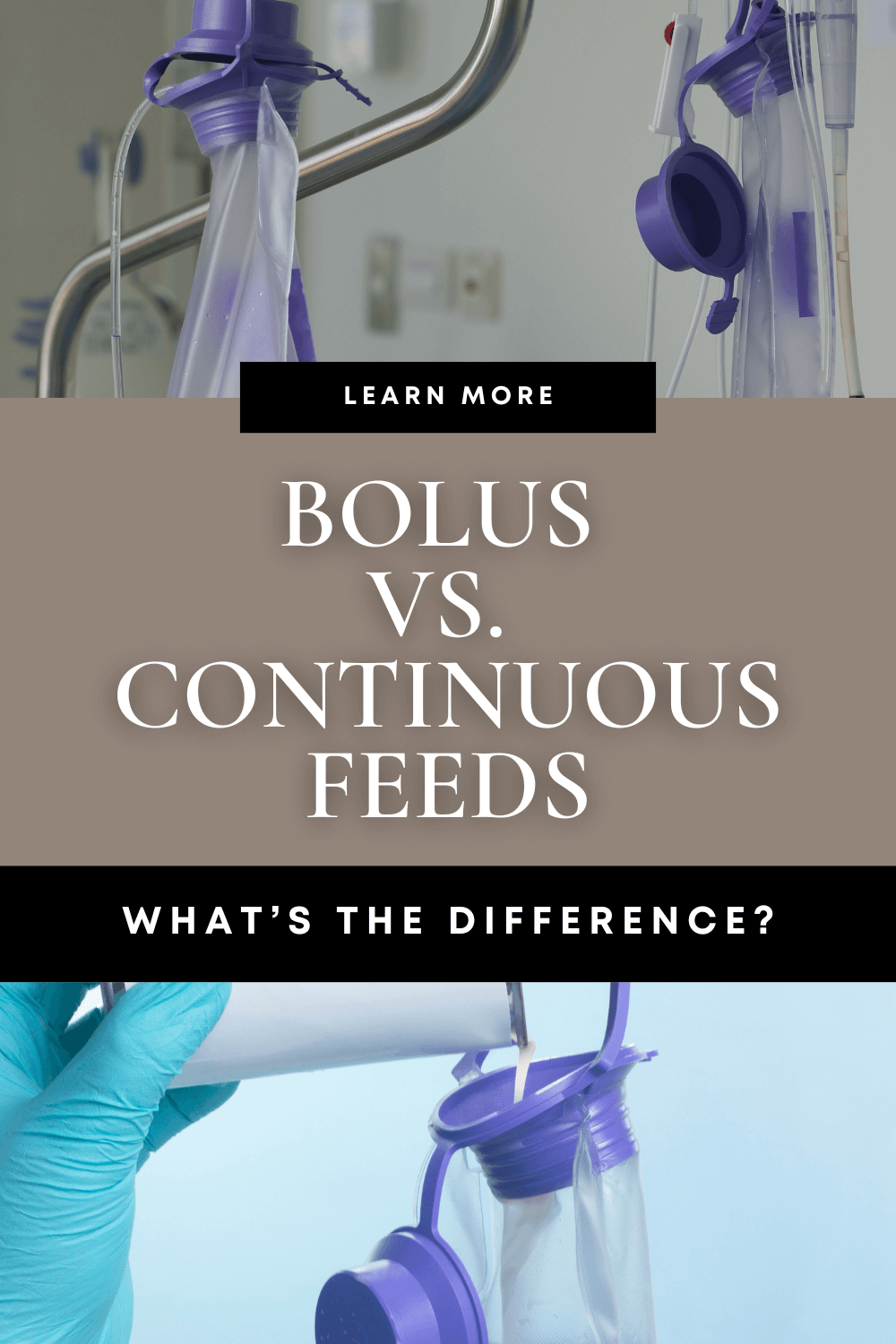If your child just got a G-tube and you feel like you’re drowning in medical terms, this guide is for you. In plain language (with some sarcasm), I’m breaking down the must-know G-tube terms for parents so you can feel less overwhelmed and more in control—even if you’re running on coffee and zero sleep.
You are not alone. You are not failing. You are learning fast under pressure—and that’s a superpower.

When my son got his G-tube, I thought, Cool, how hard can this be? Then the doctors started tossing around all these G-tube terms for parents to somehow “just know”—like bolus feeds and venting—and suddenly I felt like I’d stumbled into a Grey’s Anatomy episode without subtitles.
I smiled, I nodded, I even wrote some things down… but internally? I was two seconds from asking for a translator and a margarita. If that’s where you are right now—welcome. You are so not alone.
This is your crash course in G-tube terms. No fluff, no jargon, just real-talk from one medical mom to another.
Related: Overwhelmed as a Medical Mom? 5 Ways to Cope
1. Bolus Feeds – One of the First G-Tube Terms Parents to Learn
What it is: A fancy way of saying “feeding your kid in chunks” instead of slowly dripping food all day. Usually done with a syringe and your best “don’t squirt this all over the couch” face.
Why it matters: Mimics normal meals and gives you a feeding schedule that doesn’t revolve around a machine. Translation? More freedom and less pump-wrangling. Also, if your kid can tolerate it, it’s the BEST way to feed on the go, especially while traveling!
Related: How to Take a Road Trip with a Medically Complex Child
2. Continuous Feeds (aka: Food on a Slow Drip)
What it is: Instead of meals, the pump feeds your kid slooooowly over hours. Think of it like an IV drip for dinner.

Why it matters: Perfect for kids who get reflux, can’t handle big feeds, or just need a gentler approach. My son is not on continuous feeds, but sometimes we do them when he’s sick to keep him hydrated and nourished. Your g-tube is a secret weapon during illnesses. Way less dehydration ER visits! You’ll hear this one often in G-tube basics conversations with doctors and nurses. Downside? You make friends with your pump. Like, real friends.
Related: G-tube Feeding Tips for Parents: What Every Mom of a Tubie Needs to Know
3. Venting the G-Tube (aka: Releasing the Beast)
What it is: Letting gas out of your kid’s stomach through the tube. Sounds weird. Is weird. Works like magic.
Why it matters: Because gas = pain. Pain = screaming. Screaming = no sleep. And no sleep = no sanity. This is something they didn’t train me on in the NICU. If you don’t know how to vent, here is a 2 minute video that will help. It will save you so much stress, sleep, and tears. (both your child’s and yours!) Vent, mama. Vent like your night depends on it. (Because it does.)
4. Extension Set (aka: The Adapter You Didn’t Know You’d Need)
What it is: A tube that connects to the button so you don’t have to manhandle the stoma every time you feed, flush, or medicate.
Why it matters:
Saves time, saves sanity, and saves you from turning into a human octopus trying to hold everything in place. Part of navigating these tube feeding terms is knowing which accessories actually make your life easier. Understanding how to use an extension set is one of those small wins that makes the list of must-know G-tube terms for parents. This is something you want to make sure you feel comfortable with before leaving the hospital!
5. Stoma Site (aka: The Belly Button 2.0)
What it is: The spot where the tube enters the stomach. Like a piercing, but with higher stakes and more gauze.
Why it matters: Keep it clean. Keep it dry. Keep an eye on it. Because angry stomas love to ruin your day (and your laundry). Keeping the gastrostomy site clean is one of those things you never think about until it’s suddenly your daily job.
6. Granulation Tissue (aka: That Weird Bump That Won’t Go Away)
What it is: Extra tissue your kid’s body grows around the G-tube site. It’s trying to heal… but it’s a bit overenthusiastic about it.
Why it matters: It can bleed, get crusty, or just look like it’s mad at you. Silver nitrate is your friend here. So are prayers. This one’s in every feeding tube glossary, but no one really tells you what it looks like until you’re googling photos at midnight.
Real talk: The first time I saw granulation tissue, I thought the tube was rejecting itself like a bad organ transplant. I panicked, called the nurse, and she was like, “Oh yeah, that happens.” Cool cool cool.
7. Flushing the Tube (aka: Don’t Skip This Unless You Like Drama)
What it is: Pushing water through the tube after meds or food so it doesn’t get clogged.
Why it matters: A clogged tube is like a coffee machine explosion—messy, inconvenient, and guaranteed to happen at the worst time.
Real talk: I once skipped a flush at bedtime. Midnight came, the tube was blocked, my kid was hungry, and I was Googling “how to unclog a G-tube with zero sleep and no will to live.”
8. Pump vs. Gravity Feeds (aka: Tech or Old School?)
Pump feeds: Use a machine to deliver food slowly and steadily.
Gravity feeds: Use a syringe and let physics do its thing. Spoiler: It’s not as elegant as it sounds.
Why it matters: Knowing both gives you flexibility. Like when the pump decides to die halfway through a feed and your only backup is—you guessed it—holding that syringe like it’s a funnel of destiny.
9. Alarm Beeps (aka: Tiny Heart Attacks in the Night)
What it is: Pump or ventilator alarms that all sound vaguely like your house is under attack.
Why it matters: Learning what each beep means helps you troubleshoot fast—without ripping everything out in a sleep-deprived panic.
Real talk: There should be merit badges for mastering the art of pump alarm triage at 2 a.m., while holding a baby and trying not to trip over your own dignity.
You’ve Got This, Even When It Feels Like You Don’t
If you’re reading this and feeling overwhelmed, I want you to know: that’s normal. There’s no textbook for this life, but you’re doing an incredible job figuring it out. If you need a little encouragement or some more tips, check out my survival tips in this post!
Learning the language of G-tubes—and mastering these common G-tube terms for parents—makes you a stronger advocate, a more confident parent, and a certified medical ninja (with or without sleep). Learning these G-tube terms for parents won’t solve everything—but it sure makes the ride less bumpy.
Still feeling like you need a translator in every appointment? I made a Medical Mom Cheat Sheet with questions to ask your care team that actually help. No fluff. No “just trust your instincts” nonsense. Just real questions I wish I had when I was nodding along and secretly panicking. Grab it here.
👉 Looking for tube-friendly onesies that make access easier? Check out my favorites here.
📌 Pin this post so when the jargon hits the fan, you’ve got a cheat sheet ready.

❓FAQ: Because You’re Tired, Googling at Midnight, and Just Need Answers
1. Wait… what’s the difference between a G-tube and a feeding tube?
A G-tube is a feeding tube, but it’s the kind that goes straight into the stomach through a little opening in the belly. It’s short for “gastrostomy tube,” which sounds fancy but basically means: permanent door for food. There are other types like NG tubes (up the nose), but if you’re here, you’re probably dealing with the belly version.
2. How long before I stop feeling like I’m going to break the tube (or my child)?
First off: you’re not gonna break your kid. The tube? Maybe. But your child? Not so much. Give it a solid week of daily use and you’ll go from “I need a nurse!” to “I could teach this class.” Eventually you’ll be unclogging with warm water like a pro while sipping coffee with one hand.
3. Can my kid still eat by mouth or is it G-tube life forever?
Depends. Some kids eat AND tube, some don’t. Some snack, some slurp, some just smell things and call it a meal. You’ll figure out what your kid can handle with your medical team. But yes—having a G-tube doesn’t mean food is off the table. (Pun intended.)
4. Do I have to boil all the parts like it’s 1923?
LOL no. Unless your hospital sends you home with a mini autoclave, you’re good with hot, soapy water and air drying. You’ll get a routine for how often to toss stuff like syringes and extension sets. Until then, do your best and try not to stress if something lives in the drying rack longer than it should.
5. What’s the biggest “oops” new G-tube parents make?
Trying to do everything perfectly. Spoiler alert: it’s not possible. You will forget to flush. You will question whether that was granulation tissue or just a mystery scab. Alarms will go off at the worst time. You are learning in real time—and that’s superhero stuff.
Disclosure: This post contains affiliate links, which means I may earn a small commission if you make a purchase—at no extra cost to you. Thank you for supporting this blog and helping me keep the coffee flowing.
